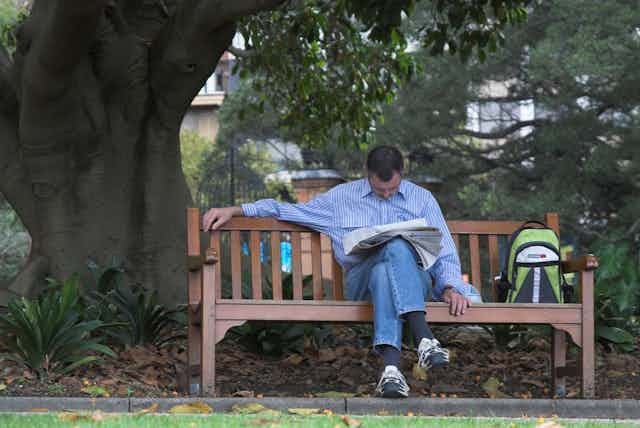The Australian print media have been criticised for inaccurately reporting the carbon pricing mechanism (CPM), and in some instances for actively campaigning against the Gillard government. Research from the Australian Centre for Independent Journalism, before the start of the carbon price, reinforced these claims. It found an overwhelmingly negative coverage of the carbon price by News Limited papers in a study of ten national newspapers.
Following the introduction of the carbon price, an undergraduate research team from the University of Melbourne has confirmed these findings in an analysis of The Age, Herald Sun and The Australian.
We found that these newspapers are contributing to an uninformed and inadequate public debate on the carbon price and Australian climate change policy.
The research considered all articles in the three newspapers that referred to the “carbon price”, “carbon pricing mechanism”, or “carbon tax” in three different weeks.
One was the first week of July 2012, when the carbon price was introduced. The others were a month before and a month later. The articles were analysed in terms of their tone (was the article supportive, unsupportive or neutral), terminology (was the policy referred to as a tax or price), and source content (who was quoted).
When neutral articles from each newspaper were excluded, The Australian and Herald Sun were found to be overwhelmingly unsupportive of the policy. Articles in The Age were also unbalanced, with a preference for a supportive stance.

News Limited newspapers almost exclusively used the term “carbon tax”, with little reference to the mechanism as a “price”. This selective use of language is extremely important, as people respond differently to the language of prices or taxes when confronted with options for paying for climate change mitigation. However, while the word “price” is used in official government publications, the language used by most politicians is generally “carbon tax”. Interestingly, Prime Minister Julia Gillard reinforced this when she admitted after the election the mechanism would operate “effectively like a tax”.

The media analysis also revealed that all papers heavily favoured quoting sources from the Liberal Party, Labor Party and businesses. This reflects the intense political debate surrounding climate change solutions. And it’s in keeping with journalistic techniques that use political figures from opposing parties to demonstrate balance.

Of more concern was the small number of articles quoting economists, climate scientists and other independent experts. This gap in coverage contributed to a shallow media discussion. It contextualised the policy in terms of short-term economic effects rather than long-term environmental – or economic – goals.
The carbon price follows logic set out in the Stern Review. It advocates for investment in climate change mitigation now, to ensure continued economic prosperity and minimise later economic costs from climate change impacts or delayed climate change mitigation.
Not only was this fundamental argument barely mentioned, discussion of climate science was almost non-existent. This is critical to public perceptions of the carbon price, as without reinforcing the motivations for introducing such a policy, readers are less likely to believe it is necessary.
More balanced newspaper coverage of the carbon price might have discussed alternative solutions to climate change, rather than merely campaigning against the policy’s short-term economic consequences. Importantly, articles might have questioned the generous concessions given by the government to certain businesses, and might have asked questions regarding the reliance on overseas abatement to meet emissions reduction targets.
However, it must be acknowledged that journalists work to tight deadlines, often making it difficult to report on issues with great depth. The way newspapers have traditionally worked is changing with the arrival of online news. Newspapers are receiving reduced revenue from advertisers, which means less money for funding investigative journalism, which is more expensive than simply reporting news.
Deadlines and funding limitations may partially explain the lack of depth in the coverage of the carbon price, but they do not explain the difference in coverage across the three newspapers.
This may be explained by the findings of the Report of the Independent Inquiry into the Media and Media Regulation. This found that the way the media is currently regulated is not adequate to ensure accountability to the public, or to make sure reporting is as accurate and balanced as it should be.
It is not surprising that two of the newspapers show bias against the carbon price. Both have published editorials opposing it: on 30 June “The Herald Sun will continue to campaign against this tax, and that is a promise we will keep unless proved wrong” and on 2 July “As The Australian has detailed previously, we believe the government is moving too soon to price carbon …”.
The aim of this research is not to condemn articles and newspapers that are critical or discuss flaws with the pricing mechanism. Rather, the study highlights that the way the media is discussing the mechanism is inadequate: current reporting techniques and standards fail to give the issue the level of analysis required. This means that the overall media coverage does not discuss the need for action on climate change, nor does it balance the short-term economic costs against long-term gains.

